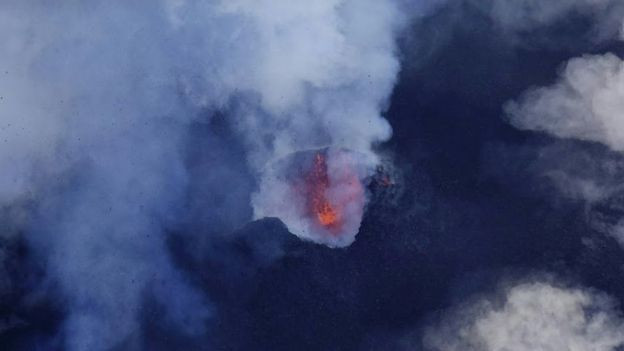Climate Change Will Make Volcanic Eruptions Deadlier In The Future: Study

According to a new study led by the National Center for Atmospheric Research (NCAR), major volcanic eruptions in the future have the potential to affect global temperatures and precipitation more than past eruptions.
The team wanted to study the cataclysmic eruption of Indonesia's Mount Tambora in April 1815, which is thought to have triggered the so-called "year without a summer" in 1816. The study published in Nature.com showed that an eruption of similar proportions, in 2085, could trigger a more dramatic change.
According to a report by the University Corporation for Atmospheric Research's AtmosNews site, "if a similar eruption occurred in the year 2085, temperatures would plunge more deeply, although not enough to offset the future warming associated with climate change. The increased cooling after a future eruption would also disrupt the water cycle more severely, decreasing the amount of precipitation that falls globally."
According to NCAR scientist John Fasullo, who is a co-lead author of the study, "the reason for this difference between 1815 and 2085 is that oceans are expected to become more stratified as the planet warms, and therefore less able to moderate the climate impacts caused by volcanic eruptions."
"We discovered that the oceans play a very large role in moderating, while also lengthening, the surface cooling induced by the 1815 eruption," said John Fasullo added.
To understand how there is a change between the two scenarios, we need to understand Mount Tambora's eruption. This is the largest eruption in several centuries. It spewed a huge amount of sulfur dioxide into the upper atmosphere, where it turned into sulfate particles called aerosols. Aerosols reflect sunlight. The cloud effectively shielded earth by blocking sunlight, making it extremely cold in the summer of 1816, especially across Europe and the northeast of North America.
According to the study, the "year without a summer" was blamed for widespread crop failure and disease, that caused more than 100,000 deaths globally.
The team studied data from two simulations from the Community Earth System Model(CESM). The first was taken from the CESM Last Millennium Ensemble Project, which simulates the climatic conditions from the year 850 through 2005, including volcanic eruptions in the historic record. The second dataset was taken by running CESM forward and repeating a hypothetical Mount Tambora eruption in 2085.
The climate simulation of the 2085 eruption showed that earth would experience a similar increase in snow cover. The oceans' ability to regulate surface temperature would diminish by 40 percent by 2085. This means that Earth's surface cooling could be as much as 40 percent greater in the future. The scientists caution, however, that the exact magnitude is difficult to quantify, since they had only a relatively small number of simulations of the future eruption.
Stratification levels in oceans by 2085 would be very high. This means that temperatures would increase. The warmer water at the ocean's surface is then less able to mix with the colder, denser water below.
According to the report, "In the model runs, this increase in ocean stratification meant that the water that was cooled after the volcanic eruption became trapped at the surface instead of mixing deeper into the ocean, reducing the heat released into the atmosphere."
Study co-author Otto-Bliesner said in the report that, "The response of the climate system to the 1815 eruption of Indonesia's Mount Tambora gives us a perspective on potential surprises for the future, but with the twist that our climate system may respond much differently."
© Copyright IBTimes 2025. All rights reserved.





















